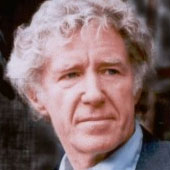Does Saudi Arabia Have the United States Over a Barrel?
What does the United States need to do to lessen its dependence on Saudi oil?
April 29, 2004
In 1970, a bushel of wheat could be traded for a barrel of oil in the world market. It now takes nine bushels of wheat to buy a barrel of oil.
The two countries most affected by the dramatically shifting terms of trade between grain and oil are the United States and Saudi Arabia.
The United States — the world’s largest importer of oil and its largest exporter of grain — is paying for this shift in the wheat-oil exchange rate with higher gasoline prices.
The nine-fold shift is also driving the largest U.S. trade deficit in history, which in turn is raising external debt to a record level, weakening the U.S. economy.
In contrast, Saudi Arabia — the world’s leading oil exporter and a high-ranking grain importer — is benefiting handsomely.
During the early 1970s, before the oil price hikes by OPEC, the United States largely could pay its oil import bill with grain exports. But in 2003, grain exports covered only 11% of the staggering U.S. oil import bill of $99 billion.
While the exchange rate between grain and oil was deteriorating, U.S. domestic oil output was falling and oil consumption was rising — which means that oil imports were climbing. In 2003, oil imports accounted for 60% of total use.
The shift in terms of trade between the price of wheat — a surrogate for grain prices, and that of oil — is both dramatic and ongoing. From 1950 to 1973, the prices of wheat and of oil were remarkably stable, as was the relationship between the two.
At any time during the 23-year span, a bushel of wheat could be traded for a barrel of oil in the world market.
The first big adjustment between oil and wheat came when OPEC tripled the oil price at the end of 1973. During the 1974-78 period, it took roughly three bushels of wheat to buy a barrel of oil.
Then, in the years after the second OPEC oil price hike, which boosted the price of oil from $13 per barrel in 1978 to $30 per barrel in 1979, it took seven bushels of wheat to by a barrel of oil.
This steep rise in the buying power of oil led to one of the most abrupt transfers of wealth in history. The coffers of major oil exporters — such as Saudi Arabia, Kuwait and Iran — began to overflow with dollars, even as those of many oil-importing countries were being emptied.
In response to higher prices, world oil production outside OPEC expanded, thus loosening OPEC’s grip on prices. Between 1985 and 1986, the price of oil dropped by half.
From that year until 1999, it took on average five bushels of wheat to buy a barrel of oil. During 2000-2003, it took seven bushels of wheat to buy a barrel of oil. And now, in early 2004, it takes nine bushels.
No one knows for sure what will happen to the wheat-oil exchange rate in the years ahead. In contrast to grain production, which can continue indefinitely, oil production is going to peak and decline at some point — probably within the next five to 15 years.
Exactly when it peaks depends on the depletion strategies adopted by the major oil companies and oil exporting countries.
If they decide to stretch their dwindling reserves by lowering production to extend the lifetime earning period of their oil fields, then the peak will come later.
But if they are preoccupied with boosting near-term sales, oil production may rise more rapidly, hastening the day when output will peak and start to fall.
Even as we anticipate the peaking of petroleum production, oil use continues to rise, especially in countries like China and India that are industrializing at a breakneck pace.
China has already eclipsed Japan as an oil consumer, moving into second place behind the United States.
The United States is pressing the Saudis to produce more oil. But the answer is not for the Saudis to produce more. Rather, it is for the United States to consume less.
There are many steps that the United States can take to reduce oil use with existing technologies. For example, the new cars with hybrid gas-electric engines — such as the Toyota Prius and the Honda Civic — are remarkably fuel-efficient.
The 2004 Prius averages 55 miles per gallon (mpg) in combined city and highway driving, double or even triple that of other midsize cars.
If the United States were to raise the fuel efficiency of its automobile fleet over the next 10 years to that of the Toyota Prius, U.S. gasoline consumption could be cut in half. This would not require any reduction in the number of cars, only the use of more efficient engines.
Unless the United States assumes a leadership role in this and other areas — such as improving gas-electric hybrids and investing in vast U.S. wind resources — Saudi Arabia will continue to dictate the terms of trade between oil and grain. This means they also will dictate U.S. gasoline prices.
The United States, as the world’s largest oil consumer and importer, can regain some influence on oil pricing by sharply reducing its dependence on oil. This would also delay the day when oil production peaks, buying the world time for a smoother transition to the post-petroleum era.
The United States has the technologies and energy resources to lead this effort. What the world needs today is not more oil, but more leadership.
Read previous
Los Angeles on the Edge
April 28, 2004
